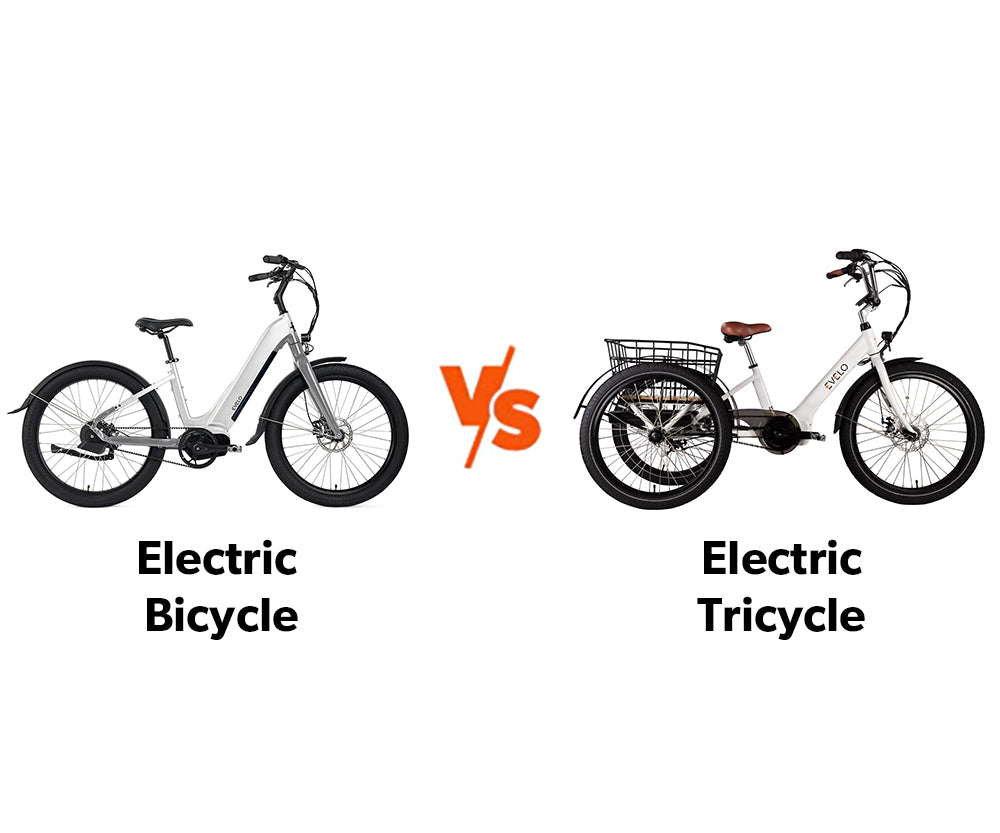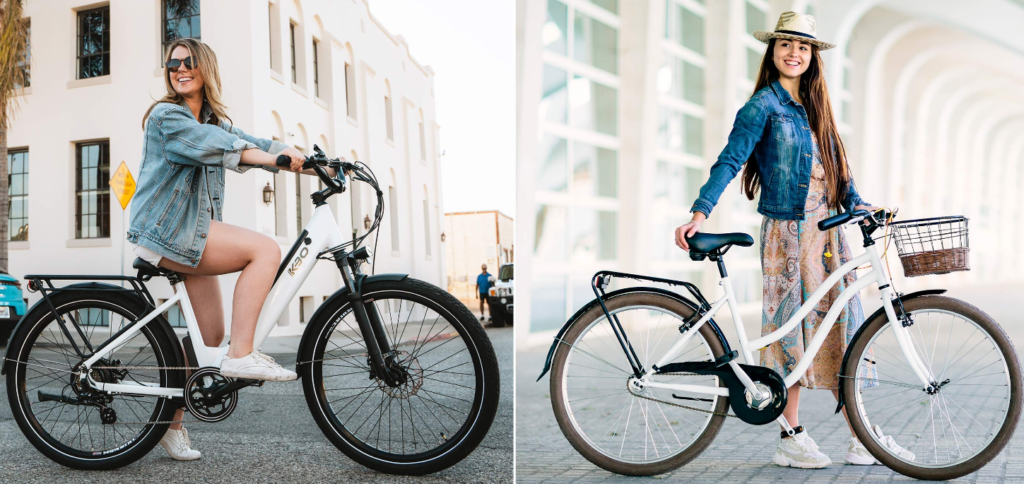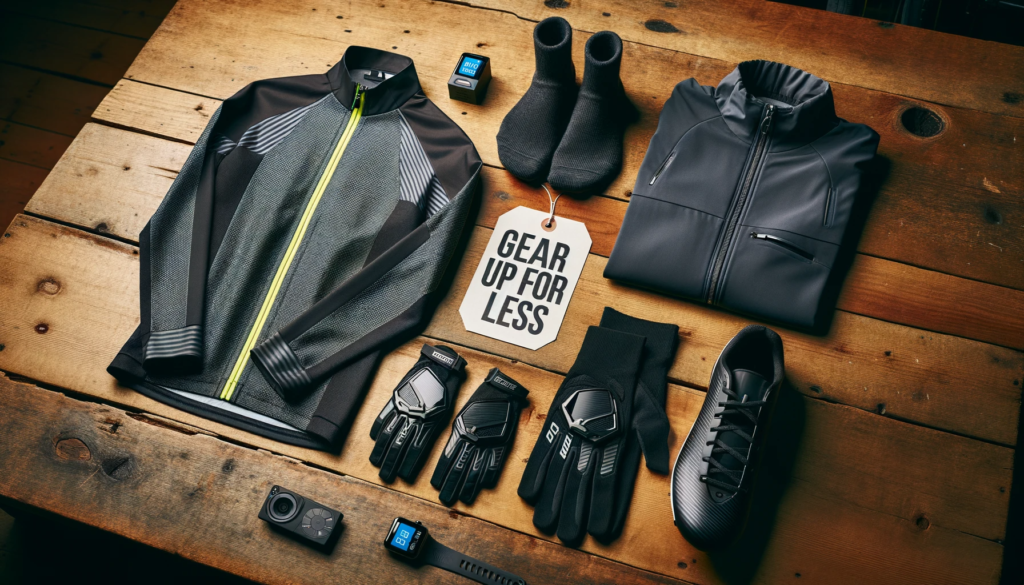Electric trikes and electric bikes, both provide eco-friendly transportation to get around and can be tailored to individual preferences and needs.
But which one is better in terms of power and performance?
Electric trikes offer stability and a lower center of gravity, making them suitable for individuals needing extra support, while electric bikes are more agile and suitable for urban commutes or recreational rides. On the other hand, electric bikes offer agility and versatility, making them ideal for urban commuting or leisurely rides.
Let’s dive into a detailed comparison of their power and performance. This guide will help you understand the differences, so you can make an informed choice.
What Are Electric Trikes and Electric Bikes?
Before we compare, let’s clarify what these vehicles are. Both are powered by electric motors and batteries. They provide an alternative to gas-powered transport. However, their designs and uses differ significantly.
Electric Trikes: The Three-Wheeled Option
Electric trikes have three wheels—usually two in the back and one in the front. This design offers stability. They’re powered by an electric motor and a battery. You pedal to assist the motor or rely on the throttle for a motorbike-like ride.
They often have a cargo area or basket, making them great for carrying groceries or gear. Trikes are popular with older riders or those with balance issues. They’re also used for commercial deliveries in some cities.
Electric Bikes: The Two-Wheeled Classic
Electric bikes, or e-bikes, have two wheels and work similarly. They combine pedaling with electric assistance. You can choose how much help the motor provides. E-bikes are sleek, lightweight, and built for speed or commuting. They suit commuters, fitness enthusiasts, and casual riders.
Now that we know the basics, let’s compare their power and performance.
Power: How Do They Stack Up?
Power is a big factor when choosing between an electric trike vs electric bike. It determines how fast you go, how far you travel, and how well you handle hills.
Motor Strength
Electric trikes and e-bikes both use motors measured in watts. Most e-bikes have motors between 250 and 750 watts. Some high-performance models go up to 1,000 watts.
Trikes often have stronger motors, ranging from 500 to 1000 watts. Why? Trikes are heavier and carry more weight, so they need extra power to move efficiently.
However, a stronger motor doesn’t always mean better performance. E-bikes are lighter, so a 500-watt motor feels zippy. On a trike, the same motor might feel slower because of the added weight. If you’re climbing steep hills, a trike’s stronger motor gives it an edge. For flat roads, an e-bike’s lighter frame makes it just as powerful.
Battery Range
Batteries determine how far you can go. They’re measured in watt-hours (Wh). E-bikes typically have batteries between 400 and 700 Wh. Trikes often have larger batteries, from 600 to 1,000 Wh, to support their heavier frames and cargo loads.
A larger battery means a longer range. For example, an e-bike with a 500 Wh battery might travel 20-50 miles, depending on terrain and rider weight. A trike with an 800 Wh battery could go 30-60 miles. However, trikes use more energy due to their weight, so the range difference isn’t always huge.
If you’re riding long distances, an e-bike might be more efficient because it’s lighter. But trikes often have bigger batteries, so you won’t run out of juice quickly. Consider your riding habits. Short trips? Either works. Long commutes? Check the battery specs.
Pedal Assist vs. Throttle
E-bikes often come with pedal-assist systems. These boost your pedaling power, making rides easier. Some e-bikes also have throttles, letting you move without pedaling. Trikes, on the other hand, often rely on throttles. This makes them easier to ride for those who can’t pedal much.
Pedal-assist e-bikes feel more like traditional cycling. Throttle-based trikes are closer to a scooter-like experience. Your choice depends on whether you want exercise or effortless riding.
Performance: Speed, Stability, and Handling
Power is only half the story. Performance determines how these vehicles feel on the road. Let’s look at key aspects like speed, stability, and handling.
Speed
E-bikes typically reach speeds of 15-28 mph, depending on the motor and local laws. Class 3 e-bikes, for example, are capped at 28 mph in many places. Trikes are often slower, with top speeds of 10-20 mph. Their heavier frames and extra wheels create more drag.
If you need speed for commuting, an e-bike is usually the better choice. Trikes prioritize stability over velocity, which suits leisurely rides or cargo transport.
Stability and Balance
Here’s where trikes shine. Their three-wheel design makes them incredibly stable. You don’t need to balance, which is great for beginners, seniors, or those carrying heavy loads. E-bikes, being two-wheeled, require balance, especially at low speeds or when stopped.
Trikes are ideal if you’re worried about falling. They’re also great for uneven surfaces or carrying passengers. E-bikes, however, are more agile, making them better for weaving through traffic or tight spaces.
Handling and Maneuverability
E-bikes are nimble. Their lightweight frames make them easy to steer and navigate. You can zip through city streets or trails with ease. Trikes are less agile. Their wider turning radius and heavier weight make sharp turns trickier.
If you’re riding in crowded areas, an e-bike’s maneuverability is a big plus. Trikes are better for open spaces or straight paths, like bike lanes or park trails.
Design And Features
When considering the choice between an electric trike and an electric bike, a crucial factor to evaluate is their design and features. The design and features of both options can significantly impact your riding experience, convenience, and practicality. Let’s delve into the specific attributes of electric trikes and electric bikes to determine how their design and features differentiate them.
Electric Trike
Electric trikes are sturdy three-wheeled vehicles that offer exceptional stability and balance. Their unique design provides added support for riders, making them an ideal choice for individuals with limited mobility or those who require extra assistance when cycling. The distinct tricycle configuration of electric trikes enables them to carry heavy cargo or accommodate passengers with ease.
- Provides enhanced stability and balance
- Ideal for individuals with limited mobility
- Capable of carrying heavy cargo or passengers
Electric Bike
On the other hand, electric bikes, also known as e-bikes, feature a conventional bicycle design with an integrated electric motor. These bikes offer versatility and agility, allowing riders to navigate various terrains and maneuver through urban environments effortlessly. Electric bikes are designed to facilitate a seamless transition between traditional pedaling and electric-assisted propulsion, offering a dynamic and exhilarating riding experience.
- Offers versatility and agility for different terrains
- Enables seamless transition between traditional pedaling and electric-assisted propulsion
- Perfect for navigating urban environments
Practicality: Which Fits Your Lifestyle?
Beyond power and performance, let’s look at how these vehicles fit into daily life.
Cargo and Storage
Electric trikes are fantastic for carrying stuff. Many come with baskets or cargo areas, perfect for groceries, work supplies, or even kids. E-bikes can have racks or panniers, but their cargo capacity is limited. If you need to haul heavy loads, a trike is the way to go.
Ease of Use
Trikes are easier for beginners. You don’t worry about balancing, and the throttle lets you ride without pedaling. E-bikes require more skill, especially if you’re not used to cycling. However, e-bikes are easier to store and transport. They’re lighter and fit in bike racks or car trunks. Trikes are bulkier and harder to store in small spaces.

Credit: www.hovsco.com
Cost and Maintenance
Let’s talk money. Both options have upfront and ongoing costs.
Initial Cost
E-bikes generally cost between $1,000 and $3,000, though high-end models can hit $5,000 or more. Trikes are often pricier, ranging from $1,500 to $4,000, due to their larger frames and batteries. Cargo or commercial trikes can cost even more.
Your budget will play a big role. E-bikes are usually more affordable, but trikes offer unique features that might justify the extra cost.
Maintenance Needs
Both vehicles need regular maintenance. Batteries require charging and eventual replacement, typically after 500-1,000 cycles. E-bikes have simpler frames, so repairs like tire changes are easier and cheaper. Trikes, with their extra wheels and components, can be costlier to maintain.
Check for local repair shops familiar with e-vehicles. E-bikes are more common, so parts and service are often easier to find.
Environmental Impact
Both electric trikes and e-bikes are eco-friendly compared to cars. They use less energy and produce zero emissions. However, trikes consume more power due to their weight, which slightly increases their environmental footprint. E-bikes, being lighter, are a bit greener.
If sustainability is a priority, either option is a great choice. Your riding habits, like charging with renewable energy, can further reduce your impact.
Credit: forums.electricbikereview.com
Which Should You Choose?
So, which is better? It depends on your needs.
- Choose an electric trike if: You want stability, need to carry cargo, or prefer a relaxed ride. Trikes are great for older riders, families, or anyone who values comfort over speed. Their powerful motors handle hills and heavy loads well.
- Choose an electric bike if: You prioritize speed, agility, and affordability. E-bikes are ideal for commuters, fitness buffs, or urban riders who need to navigate tight spaces. They’re lightweight and fun to ride.
Frequently Asked Questions
What Is The Difference Between E-bike And E Trike?
An e-bike has two wheels, while an e-trike has three. E-bikes are easier to balance, e-trikes offer more stability.
What Are The Disadvantages Of Electric Tricycle?
Electric tricycles have limited speed and range compared to cars. Battery replacement can be costly. Charging infrastructure may be lacking in some areas. Storage space is usually smaller than traditional bicycles. Maintenance costs can add up over time.
Is A Trike Better Than A Bike?
A trike can offer better stability and balance compared to a bike. It provides a comfortable upright seating position and is suitable for people with balance or mobility issues. Trikes are an excellent choice for leisurely rides and long-distance journeys.
What Are The Benefits Of The Electric Trike?
Electric trikes offer increased stability, eco-friendly transportation, and reduced physical effort for riders. They are ideal for those with mobility issues. The electric motor provides added power and speed, making it easier to navigate hills and cover longer distances. These trikes also contribute to reducing air and noise pollution.
Conclusion
Electric trikes and e-bikes each have unique strengths. Trikes offer stability and utility, while e-bikes provide speed and versatility.
By understanding their power and performance, you can pick the one that fits your life. Whether you’re hauling groceries or cruising to work, there’s an electric vehicle for you. Ready to hit the road?




